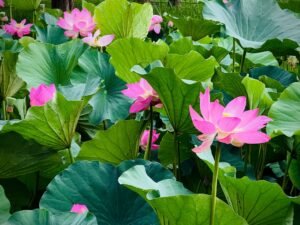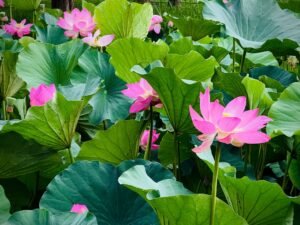

Greetings and Introductions: Essential Basic Norwegian Phrases and Vocabulary
Greetings and introductions play a significant role in Norwegian culture. They are seen as a way to show respect and establish a connection with others. In this blog post, we will explore the importance of greetings and introductions in Norwegian culture and provide you with essential phrases and tips to help you navigate these social interactions. Whether you are planning a trip to Norway or simply interested in learning about Norwegian customs, this blog post will provide you with valuable insights.
Table of Contents
ToggleSaying Hello: Common Greetings in Norwegian
When it comes to saying hello in Norwegian, there are a few common greetings that you should be familiar with. The most basic greeting is “Hei,” which is equivalent to “Hi” or “Hello” in English. Another common greeting is “God dag,” which means “Good day.” This greeting is more formal and is often used when addressing someone older or in a professional setting.
Pronunciation in Norwegian can be challenging for non-native speakers, but here are some tips to help you get it right. The “ei” in “Hei” is pronounced like the “i” in “bit.” The “o” in “God dag” is pronounced like the “oo” in “good.” Remember to pronounce the “g” at the beginning of “God dag” like the “g” in “goat.”
Introducing Yourself: Basic Phrases for Meeting New People
When meeting new people in Norway, it is customary to introduce yourself. Here are some essential phrases to help you do just that:
– “Jeg heter [your name]” – This means “My name is [your name].” It is a simple and straightforward way to introduce yourself.
– “Hyggelig å møte deg” – This means “Nice to meet you.” It is a polite way to express your pleasure at meeting someone new.
– “Hvor kommer du fra?” – This means “Where are you from?” It is a common question asked when getting to know someone.
To ask someone’s name in Norwegian, you can say “Hva heter du?” which means “What is your name?” Remember to pronounce the “h” in “heter” like the “h” in “hello.”
Asking How Someone Is: Polite Expressions of Concern
In Norwegian culture, it is common to ask how someone is as a way to show concern and establish a connection. Here are some polite expressions for asking how someone is in Norwegian:
– “Hvordan har du det?” – This means “How are you?” It is a general and polite way to inquire about someone’s well-being.
– “Hvordan går det?” – This means “How is it going?” It is a more casual and friendly way to ask about someone’s state.
When responding to these expressions, you can say:
– “Bra, takk” – This means “Good, thank you.” It is a simple and common response.
– “Det går bra” – This means “It’s going well.” It is another common response.
Responding to Greetings: How to Reply in Norwegian
When someone greets you in Norwegian, it is polite to reply. Here are some examples of how to reply to common greetings:
– If someone says “Hei,” you can reply with “Hei” or “Hei, hvordan har du det?” (Hi, how are you?)
– If someone says “God dag,” you can reply with “God dag” or “God dag, hvordan har du det?”
It is important to note that the level of formality in your reply should match the level of formality in the greeting. If someone greets you formally, it is best to reply formally as well.
Formal vs. Informal Introductions: Understanding the Difference
In Norwegian, there is a distinction between formal and informal introductions. Formal introductions are typically used in professional settings or when addressing someone older or of higher social status. Informal introductions, on the other hand, are used among friends and peers. Here are some examples of when to use each type of introduction:
– Formal: “Jeg vil gjerne presentere deg for min kollega, [name]” (I would like to introduce you to my colleague, [name]).
– Informal: “Dette er min venn, [name]” (This is my friend, [name]).
It is important to be aware of the appropriate level of formality when making introductions in Norwegian to show respect and avoid any cultural misunderstandings.
Meeting Someone for the First Time: What to Say in Norwegian
When meeting someone for the first time in Norway, it is important to make a good impression. Here are some tips to help you navigate this situation:
– Smile and make eye contact: In Norwegian culture, it is customary to smile and make eye contact when meeting someone for the first time. This shows that you are friendly and approachable.
– Use formal greetings: When meeting someone for the first time in a professional or formal setting, it is best to use formal greetings such as “God dag” or “Hyggelig å møte deg.”
– Be polite and respectful: Norwegians value politeness and respect. Make sure to use polite expressions and show interest in the other person by asking questions about their background or interests.
Making Small Talk: Topics and Phrases for Conversation
Small talk is an important part of social interactions in Norway. It helps establish a connection and build rapport with others. Here are some examples of appropriate small talk topics in Norwegian culture:
– The weather: Norwegians love talking about the weather, especially if it is particularly good or bad.
– Hobbies and interests: Asking about someone’s hobbies or interests is a great way to start a conversation and find common ground.
– Travel: Norwegians are known for their love of travel, so asking about someone’s travel experiences or sharing your own can lead to interesting conversations.
To keep the conversation going, you can use phrases such as:
– “Hva synes du om [topic]?” – This means “What do you think about [topic]?” It shows that you are interested in the other person’s opinion.
– “Har du noen planer for helgen?” – This means “Do you have any plans for the weekend?” It is a common question asked to keep the conversation flowing.
Expressing Gratitude: Thanking Someone in Norwegian
Expressing gratitude is an important part of Norwegian culture. Here are some essential phrases for expressing gratitude in Norwegian:
– “Takk” – This means “Thank you.” It is a simple and common way to express gratitude.
– “Tusen takk” – This means “Thank you very much.” It is a more emphatic way to express gratitude.
– “Jeg setter pris på det” – This means “I appreciate it.” It is a polite way to show your appreciation.
In Norwegian culture, it is also common to show gratitude through actions. For example, if someone invites you to their home, it is customary to bring a small gift such as flowers or chocolates as a token of appreciation.
Saying Goodbye: Farewells and Parting Phrases in Norwegian
When it’s time to say goodbye in Norway, there are several common farewell phrases you can use:
– “Ha det bra” – This means “Take care” or “Goodbye.” It is a general and informal way to say goodbye.
– “Vi sees” – This means “See you.” It is a casual and friendly way to say goodbye.
– “Ha en fin dag” – This means “Have a nice day.” It is a polite way to bid farewell.
As with greetings, it is important to match the level of formality in your farewell to the level of formality in the conversation.
Cultural Tips: Norwegian Customs and Etiquette for Greetings and Introductions
To navigate greetings and introductions in Norwegian culture, here are some cultural tips to keep in mind:
– Respect personal space: Norwegians value their personal space, so it is important to maintain an appropriate distance when greeting someone.
– Shake hands: When meeting someone for the first time or in a formal setting, it is customary to shake hands. Make sure to have a firm handshake and maintain eye contact.
– Use titles and last names: In formal settings, it is common to use titles and last names when addressing someone. For example, “Herr” for Mr. and “Fru” for Mrs.
It is also important to note that Norwegians are generally reserved and may not engage in small talk as much as in other cultures. However, they appreciate politeness and respect, so make sure to use polite expressions and show genuine interest in the other person.
Greetings and introductions play a significant role in Norwegian culture. They are a way to show respect, establish connections, and navigate social interactions. In this blog post, we have explored common greetings, introductions, and phrases for various situations. By practicing these phrases and understanding Norwegian customs and etiquette, you will be well-prepared to make a good impression when meeting new people in Norway. So go ahead, practice your Norwegian greetings and introductions, and enjoy the rich cultural experiences that await you!
If you’re interested in expanding your Norwegian vocabulary beyond greetings and introductions, you might find the article “How to Sound More Polite in Norwegian” helpful. This article explores ways to enhance your politeness in the Norwegian language, providing valuable insights and phrases to help you navigate social interactions with grace. Whether you’re a beginner or more advanced learner, this resource from NLS Norwegian can assist you in developing a more nuanced understanding of Norwegian communication.
If you want to learn Norwegian, you can register for classes here. We look forward to hearing from you and helping you become fluent in Norwegian.





